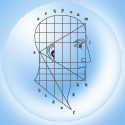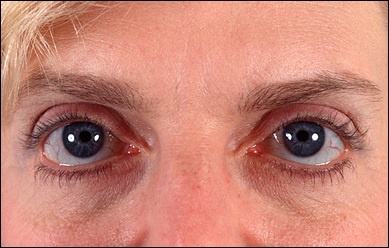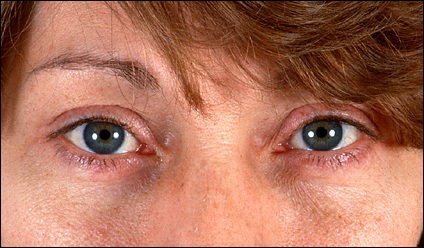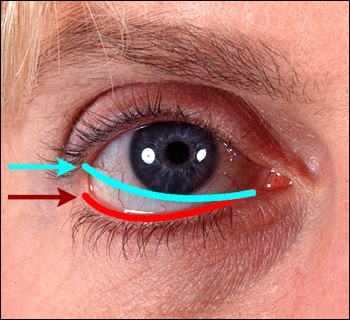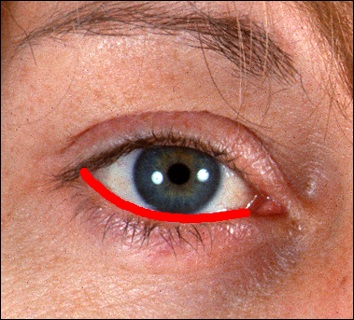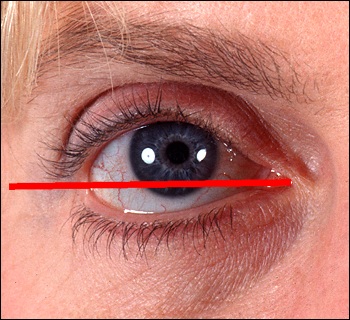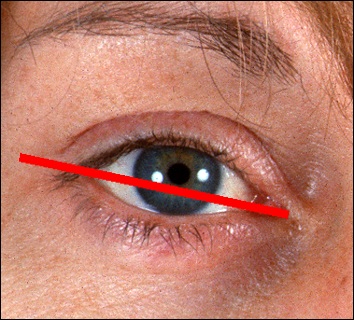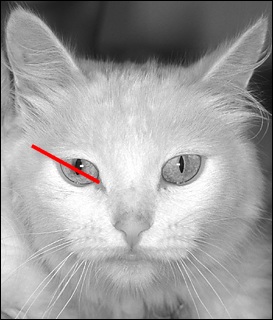 Here's why we call them
cat eyes. Note that the outer corner of the cat's eye is very much higher
than the inner corner. Compare the red axis line above right with the two
red axis lines in the photos immediately above these cats.
Here's why we call them
cat eyes. Note that the outer corner of the cat's eye is very much higher
than the inner corner. Compare the red axis line above right with the two
red axis lines in the photos immediately above these cats.
The kitten's eyes
are rounder, without the apparent angulation, because when a cat opens her eyes
wide, they lose some of that angulated almond shape, and they appear round.
Mother and child
both have a condition called heterochromia: their two eyes are different
colors. And both have blue on the right and greenish-brown on the
left! If there was ever a question who the mother is ...
|
